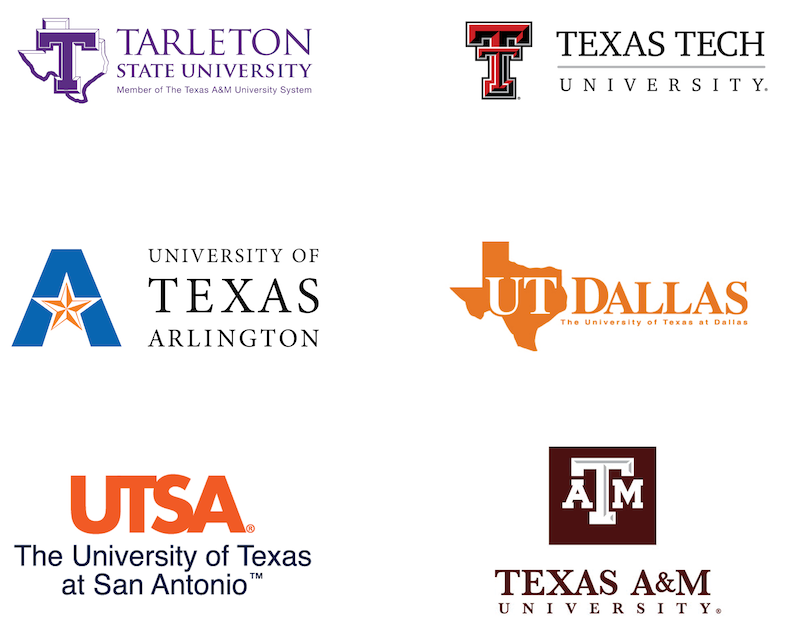 Five public universities in Texas have joined the Institute for Research on Innovation and Science (IRIS) in order to help demonstrate their impact on the state economy to lawmakers in Austin and Washington D.C. The universities are:
Five public universities in Texas have joined the Institute for Research on Innovation and Science (IRIS) in order to help demonstrate their impact on the state economy to lawmakers in Austin and Washington D.C. The universities are:
- Tarleton State University
- Texas Tech University
- The University of Texas at Arlington
- The University of Texas at Dallas
- The University of Texas at San Antonio
Along with Texas A&M University, which has been an IRIS member since 2018, six public universities in Texas with more than $1.8 billion in funded research projects are members of IRIS. All are also members of the Council of Public University Presidents and Chancellors (CPUPC), an association of 51 public universities, health science centers and university system offices in Texas with a mission to highlight the benefits of higher education in the state.
(NOTE: Two additional universities, Texas State University and Texas Tech University Health Sciences Center, joined IRIS in 2023)
“Collectively, CPUPC institutions play a huge role in the economic health and workforce development of Texas,” said Lawrence Schovanec, president of Texas Tech and Chairman of CPUPC. “The unique data provided by IRIS will highlight the contributions of university-based research to the state’s economy, which is greatly assisted by lawmakers and their research-related funding decisions.”
IRIS is a national consortium of major U.S. research universities organized around an Institutional Review Board-approved data repository, housed at the University of Michigan’s Institute for Social Research. IRIS and its members produce data to explain, understand and improve the public value of university-based sponsored research.
As an example of how IRIS data can be used by members, Schovanec cited the $50 million grant Texas Tech recently received from the National Science Foundation to fund the Center for Advancing Sustainable and Distributed Fertilizer Production (CASFER). The center has a significant workforce development aspect; IRIS data can help understand the career trajectories of employees and trainees funded by this and other grants.
“Funded research at public universities has impacts far beyond traditional measures like publications or patents,” Schovanec said. “In fact, these projects have very tangible benefits for Texas communities, and IRIS will help us illustrate them.”
“IRIS is an established provider of unique and illuminating economic impact data for research universities,” said UTSA President Taylor Eighmy. “Since its founding in 2015, I’ve worked with and admired IRIS’ work. I’m very excited to have UTSA and other top research universities here in Texas join their institute. We all look forward to documenting our case as to the economic impact of our research universities on the Texas economy as we enter the legislative session.”
In the first phase of membership, IRIS will provide fact sheets for state lawmakers showing the amount of money spent in each legislative district on research-related goods and services by each member university, as well as an aggregate report with data from all Texas-based IRIS member institutions.
“IRIS fact sheets have been invaluable for educating newly elected lawmakers and their staff about the crucial role university research plays in the state,” said Texas A & M Associate Vice President for Government Relations Michael J. Hardy. “We’ve been using them for years to help new legislators and their staff understand the economic impacts of sponsored research at Texas A&M.”
Jason Owen-Smith, Executive Director of IRIS, said the new group of members illustrates the power of aggregating state-level data: “We’re thrilled to have so many new participants from the Lone Star State. Taken together, it’s impossible to ignore the effect Texas public universities have on the state’s research enterprise.”
IRIS has also begun similar state-level aggregation in Michigan, where all three members of the state’s University Research Corridor — University of Michigan, Michigan State University and Wayne State University — are now members of IRIS.
IRIS links data submitted by member universities to a number of public and proprietary data resources to produce reports on economic development, employee trajectories, internal employment dynamics and government relations.
